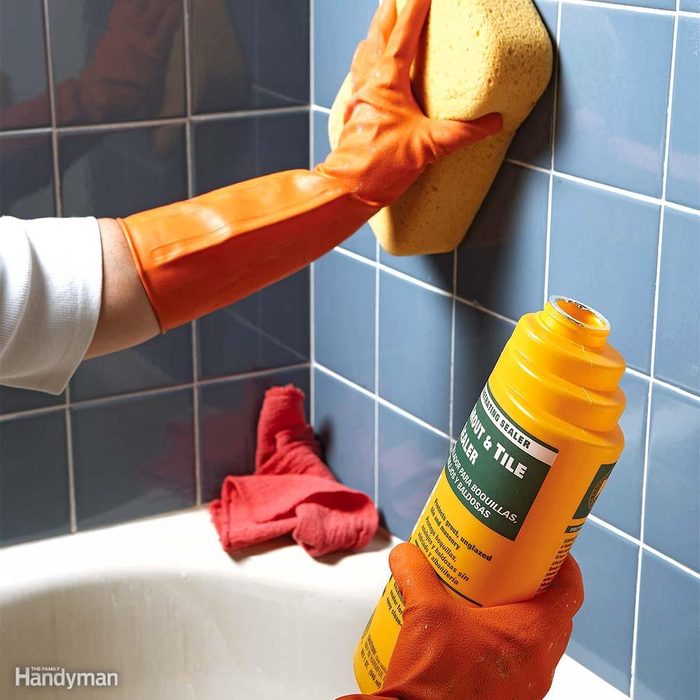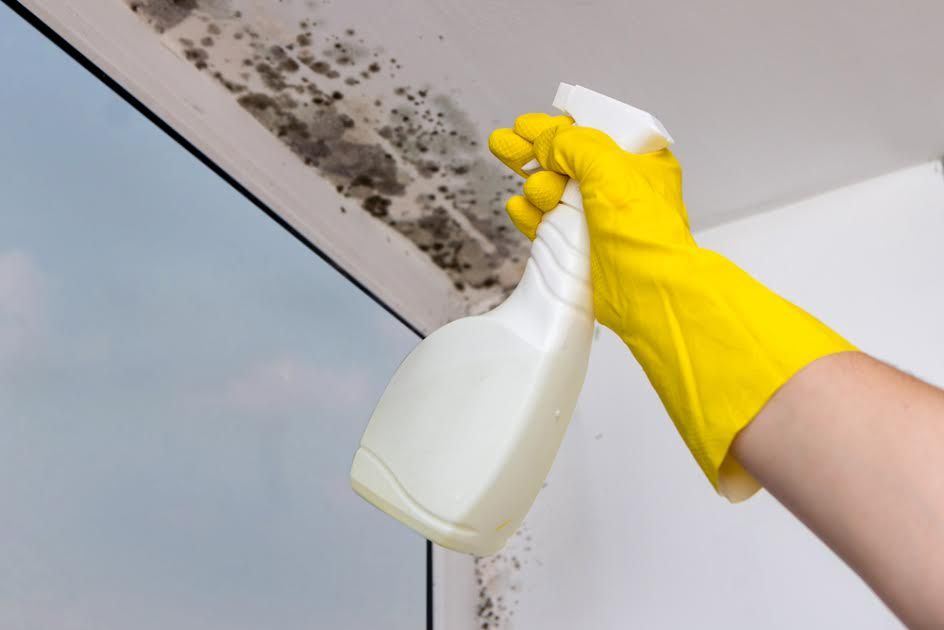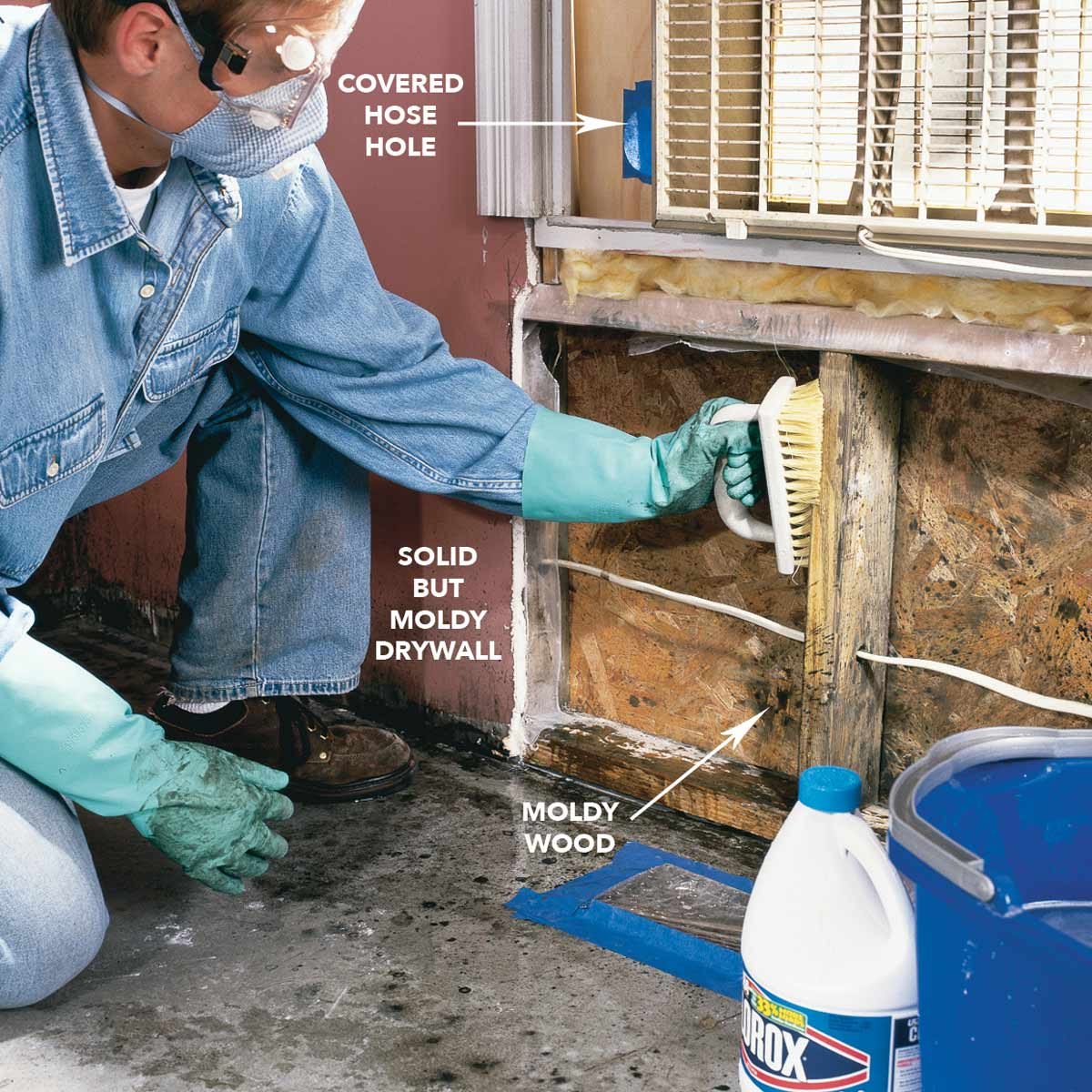Understanding Mold and Mildew: How To Get Rid Of Mold And Mildew In Your House

Mold and mildew are common household problems that can be unsightly and pose health risks. While often used interchangeably, they are distinct types of fungi with unique characteristics. Understanding the differences between mold and mildew, their health risks, and the conditions that promote their growth is crucial for preventing and controlling these issues.
Types of Mold and Mildew
Mold and mildew are types of fungi that thrive in damp, humid environments. They reproduce through spores, microscopic particles that can travel through the air and settle on surfaces. Mold and mildew are found both indoors and outdoors, and several types can grow in homes.
- Black Mold (Stachybotrys chartarum): Often found in damp areas like bathrooms and basements, black mold is known for its dark green or black color and is associated with health risks.
- Penicillium: This common type of mold can grow on various surfaces, including food, and is known for producing penicillin, an antibiotic.
- Aspergillus: Found in soil, decaying organic matter, and indoor environments, Aspergillus can cause respiratory problems in some individuals.
- Cladosporium: This common type of mold is often found on damp surfaces, such as walls, carpets, and upholstery.
- Alternaria: This mold is commonly found in soil, decaying plants, and indoor environments, and can cause allergic reactions in some individuals.
- Mildew: Mildew, a type of mold, is characterized by its powdery appearance and often grows on surfaces like fabrics, walls, and plants.
Health Risks of Mold and Mildew Exposure
Exposure to mold and mildew can pose various health risks, particularly for individuals with respiratory issues or allergies.
- Allergic Reactions: Mold and mildew spores can trigger allergic reactions, causing symptoms like sneezing, coughing, runny nose, and itchy eyes.
- Respiratory Problems: Mold and mildew exposure can irritate the lungs and lead to respiratory problems, including asthma, bronchitis, and pneumonia.
- Skin Irritations: Direct contact with mold and mildew can cause skin irritation, rashes, and itching.
- Other Health Issues: In some cases, prolonged exposure to mold and mildew has been linked to more serious health issues, such as neurological problems, memory loss, and even cancer.
Conditions for Mold and Mildew Growth
Mold and mildew thrive in damp, humid environments where they have access to moisture and nutrients.
- Moisture: Mold and mildew require moisture to grow. This can include leaks, spills, condensation, or high humidity levels.
- Temperature: Mold and mildew prefer warm temperatures, typically between 70 and 80 degrees Fahrenheit.
- Nutrients: Mold and mildew feed on organic matter, such as wood, paper, and dust.
- Poor Ventilation: Lack of proper ventilation can trap moisture and create ideal conditions for mold and mildew growth.
Identifying Mold and Mildew

Identifying mold and mildew is crucial for effectively removing them from your home. Knowing the signs and symptoms of growth will help you locate and address the problem promptly.
Visual Inspection for Mold and Mildew, How to get rid of mold and mildew in your house
Visually inspecting your home for mold and mildew is the first step in identifying and eliminating them. Look for the following signs:
- Discoloration: Mold and mildew often appear as dark patches or spots on surfaces, commonly in shades of black, gray, green, or brown. These patches can be found on walls, ceilings, floors, furniture, and other surfaces.
- Texture: Mold can be fuzzy, powdery, or slimy, while mildew tends to be more powdery or crusty.
- Odor: Mold and mildew have distinct musty or earthy smells. If you notice a foul odor, especially in damp areas, it's a strong indicator of mold growth.
- Water Damage: Mold and mildew thrive in damp environments. Look for signs of water damage, such as water stains, peeling paint, or warped wood, which can indicate areas where mold may be present.
Signs and Symptoms of Mold and Mildew Growth
Mold and mildew can pose health risks, especially for individuals with allergies or respiratory issues. Be aware of the following signs and symptoms:
- Respiratory Problems: Mold can trigger respiratory problems such as coughing, wheezing, sneezing, and shortness of breath.
- Allergic Reactions: Exposure to mold can cause allergic reactions, including itchy eyes, runny nose, and skin rashes.
- Other Symptoms: In some cases, mold exposure can lead to more serious health issues, such as headaches, fatigue, and memory problems.
Identifying the Source of Moisture
Identifying the source of moisture is essential for preventing future mold and mildew growth. Here are some common sources to check:
- Leaking Pipes: Inspect your plumbing system for leaks, especially in areas prone to moisture buildup, such as bathrooms and kitchens.
- Condensation: Condensation can occur on windows, walls, and ceilings in humid environments. Ensure proper ventilation to reduce condensation.
- Roof Leaks: Check your roof for leaks, particularly after heavy rainfall or storms.
- Poor Ventilation: Insufficient ventilation can trap moisture, creating favorable conditions for mold growth. Ensure adequate ventilation in areas like bathrooms, kitchens, and basements.
- Water Damage: Promptly address any water damage, such as flooding or spills, to prevent mold growth.
Preventing Mold and Mildew Growth

The best way to deal with mold and mildew is to prevent it from growing in the first place. This involves creating an environment that is unfavorable for mold growth, such as reducing moisture and humidity.
Preventing Moisture and Humidity
Mold and mildew thrive in moist environments, so controlling moisture is crucial. Here are some preventive measures:
- Fix leaks immediately. Leaky pipes, roofs, or windows can create ideal conditions for mold growth. Address these issues promptly to prevent water damage and mold development.
- Ventilate damp areas. Use exhaust fans in bathrooms, kitchens, and laundry rooms to remove moisture from the air. Open windows when possible to allow for natural ventilation.
- Control humidity levels. Aim for a relative humidity level below 60%. Use a dehumidifier in areas prone to moisture, such as basements and crawl spaces.
- Dry wet areas quickly. Clean up spills and leaks immediately. Dry wet surfaces thoroughly, especially after showers or cleaning.
- Avoid condensation. Condensation can form on cold surfaces, such as windows, pipes, and walls. Insulate these areas to prevent condensation buildup.
Proper Ventilation and Dehumidification
Ventilation and dehumidification play crucial roles in preventing mold and mildew growth. Proper ventilation removes moisture from the air, reducing the humidity level. Dehumidifiers work by removing moisture from the air, lowering the relative humidity to an acceptable level.
- Install exhaust fans in bathrooms and kitchens. These fans should be turned on during and after showers and cooking to remove steam and moisture.
- Ventilate basements and crawl spaces. Ensure these areas have adequate ventilation to prevent moisture buildup. Consider installing a sump pump to remove excess water.
- Use a dehumidifier in humid areas. Basements, crawl spaces, and bathrooms are often prone to high humidity levels. Using a dehumidifier can help control humidity and prevent mold growth.
- Regularly clean and maintain ventilation systems. Clean or replace air filters in HVAC systems and exhaust fans to ensure optimal ventilation and prevent mold growth within the system.
Regular Cleaning and Maintenance
Regular cleaning and maintenance help prevent mold and mildew growth by removing spores and organic matter that can provide food sources for mold.
- Clean bathrooms and kitchens frequently. These areas are prone to moisture and organic matter, so regular cleaning is essential. Use a mild bleach solution to disinfect surfaces.
- Wipe down surfaces after spills. Clean up spills immediately to prevent mold growth. Use a damp cloth and mild detergent to clean surfaces.
- Inspect and clean gutters regularly. Clogged gutters can lead to water damage and mold growth. Clean gutters regularly to ensure proper drainage.
- Maintain outdoor areas. Remove leaves, debris, and excess vegetation from around the house to prevent moisture buildup and mold growth.
Addressing Potential Water Leaks and Sources of Moisture
Promptly addressing water leaks and sources of moisture is crucial for preventing mold and mildew growth.
- Inspect plumbing regularly. Check for leaks in pipes, faucets, and appliances. Repair any leaks promptly to prevent water damage and mold growth.
- Inspect roofs and gutters. Ensure that roofs and gutters are in good condition and are draining properly. Repair any leaks or damage to prevent water intrusion.
- Check windows and doors for leaks. Seal any cracks or gaps around windows and doors to prevent moisture from entering the house.
- Address condensation issues. Insulate pipes, windows, and walls to prevent condensation buildup. Use dehumidifiers in areas prone to condensation.
FAQ Guide
How to get rid of mold and mildew in your house - What are the most effective cleaning solutions for mold and mildew?
Bleach, vinegar, and baking soda are common and effective cleaning solutions for mold and mildew. Bleach is a powerful disinfectant, while vinegar and baking soda are natural alternatives that can effectively remove mold and mildew.
How often should I clean for mold and mildew prevention?
Regular cleaning is essential for mold and mildew prevention. It is recommended to clean areas prone to moisture, such as bathrooms and kitchens, at least once a week. You can also consider using a dehumidifier in areas with high humidity.
What are the signs of a serious mold infestation?
Signs of a serious mold infestation include a musty odor, visible mold growth in multiple areas, and health problems such as allergies, respiratory issues, or headaches. If you suspect a serious mold infestation, it is crucial to contact a professional mold remediation specialist.
